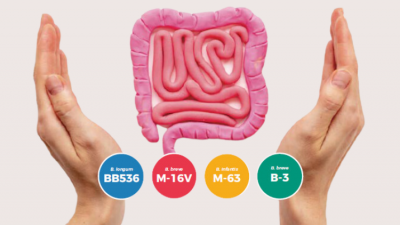Promotional Features
Postbiotics: The potential to revolutionize the immune health market
As postbiotics continue to gain traction in the biotics space, challenges and discussions around their quantification and definition continue.
In 2021, the International Scientific Association for Probiotics and Prebiotics (ISAPP) published its definition of a postbiotic as “a preparation of inanimate microorganisms and / or their components that confers a health benefit on the host”.1
The 17-word definition is an extreme simplification of a complex concept, described in a paper of more than 9,000 words.
The definition focuses on the beneficial role of inanimate microbes and their component structures, stating that components of a postbiotic may contain intact inanimate microbial cells, and / or microbial cell fragments/structures, and be with or without metabolites / end products.
Prior to this, postbiotics had been described in journals in a variety of terms, including an ‘inactivated’ live organism, ‘heat-treated’ or ‘heat-killed’ bacteria.
The definition inspired a lot of interest; in the same year it was reported that Google searches of the term ‘postbiotic’ increased by 1300%.2
Since this, a significant development in the industry was the announcement in 2023 by Health Canada that it would consider the term under the ISAPP definition to regulate the concept of postbiotics.
Other key global developments include when the American College of Gastroenterology adopted the ISAPP definition in a publication in January 2024. The same month, the China Institute of Food and Drug Control announced that the China Nutrition and Health Food Association (CNHFA) would be drafting industry standards for quantifying postbiotics and rallying firms to draft the same.3
In terms of advancing the concept of postbiotics, these are promising steps. But there are still challenges and debates regarding the category of non-viable microbes, namely how, and what, to quantify in a postbiotic.
To further clarify the term, in January 2024 ISAPP published a statement confirming that metabolites alone do not qualify as postbiotics, neither are they mandatory components of postbiotics. In order to bring clarity to the definition, and to eliminate confusion across scientific, consumer and regulatory arenas, the association published a paper to answer questions relating to the term postbiotic.4
The paper explains why a consensus definition for postbiotics was needed and covers factors including the focus on the beneficial role of inanimate microbes and their component structures and understanding the mechanisms of action. It also provides an explanation of the terms ‘components’ and ‘preparation’, and why the term ‘inanimate’ is used.
Challenges surrounding postbiotic quantification
Agreeing on the quantification method is arguably one of the main challenges for the industry. In a probiotic, colony forming units (CFU) are measured to determine the number of viable cells; in a postbiotic, CFU are not present, thus quantification is a challenge.
In a recent Spotlight On broadcast on NutraIngredients, Dr Gabriel Vinderola suggested that Total Fluorescent Units (TFU) are emerging as a potential methodology in which to measure postbiotics, albeit with certain limitations, such as those with large molecular components or metabolites as key components in the postbiotic preparation.
There are limitations for any technology to achieve standardisation and quality control. Most postbiotics are produced by heat treatment but other methods exist, such as radiation or high pressure that may not be determined by flow cytometry. The challenge for the industry here is to develop validated tools to measure and quantify postbiotics in this way.
LAC-ShieldTM – a competitive edge to advance product innovation
Postbiotic ingredients are designed to work with probiotics, rather than replace them. Indeed, some strains can be equally effective as a probiotic and as a postbiotic. It has also been noted that the overlooked efficacy of dead cells and their contribution in probiotic products – for example, those found nearing the end of their shelf life – may inspire advances for postbiotics.
The advantages of high quality postbiotic ingredients for manufacturers are numerous: unlike probiotics, postbiotics are heat resistant and stable in production and storage. The risk of bacterial infection is low, and they can be effective with a wide action target. In short, a postbiotic can lend itself to more flexible applications to create healthier, value-added products that are more challenging for probiotics, across a multitude of delivery formats.
Morinaga Milk’s LAC-ShieldTM was selected for its highest capacity to induce IL-12 production, a crucial activator that breaches both the innate and adaptive immunity. Since it was developed as an immune-enhancing ingredient in 2014, it has since been adopted by over 500 companies in Japan and incorporated into over 1,000 products, thanks to its wide range of application formats for Food & Beverage (F&B) and supplement manufacturers.
As an innovative postbiotic ingredient, LAC-ShieldTM appeals to consumers seeking immune support in functional food and drink backed by clinically proven immune health effects and a world-recognized safety profile.
The latest clinical findings show that intake of billion cells for 24 weeks of LAC-ShieldTM can suppress cold symptoms of healthy adults of all ages. Another study found that 10 billion cells for a 12-week daily intake in healthy women not only helped prevent against the common cold, but also improved positive mood states.
LAC-ShieldTM has also been found to be effective in supporting healthy aging. In elderly populations, especially those with weakened immunity, a study found that intake of 10 billion cells of LAC-ShieldTM increased effectiveness of influenza vaccination, in a population which typically experiences just 17-53% effectiveness. LAC-ShieldTM is designed to strengthen the natural defence systems through IgA production.
The competitive advantage of LAC-ShieldTM is that it even though the bacterial cells are heat-killed, LAC-ShieldTM is still possible to be quantified after adding into a finished product by way of various methods including flow-cytometry, fluorescent microscopy counting, and digital PCR, depending on the food matrix used and formulation composition. This has been demonstrated in numerous commercially available products containing LAC-ShieldTM.
The future for postbiotics
Following its panel debate in November 2022 titled ‘Postbiotics, definition and scopes’ which aimed to advance the discussion about postbiotics following some published disagreement, ISAPP is preparing to host a discussion group in July in Cork, Ireland. As a contributor to the industry, Morinaga Milk will join the discussions and share its pioneering experience and expertise in resolving the challenge of postbiotics quantification. Additional industry contributions are welcomed.5
It is hoped that forthcoming advances in supervision and management of the postbiotic market will become increasingly standardized with a widely recognized set of regulations and as such, regulatory standards will spearhead the commercialization of postbiotic products for market success.
Missed the Spotlight On broadcast? Catch up on demand
Register here to watch Postbiotics: Navigating the Path to Commercialization and join our expert speakers discussing regulations, quantification and future perspectives of the postbiotic market.
References
1. Salminen S.; Collado MC.; Endo A.; et al. (2021). The International Scientific Association of Probiotics and Prebiotics (ISAPP) consensus statement on the definition and scope of postbiotics. Nat Rev Gastroenterol Hepatol 18, 649–667.
2. Hancocks N. Postbiotics see 1,300% increase in Google searches. NutraIngredients, August 2021.
3. Koe T. Postbiotics quantification: China health foods association rallies firms to draft industry standards. NutraIngredients, January 2024.
4. Vinderola G.; Sanders ME.; Cunningham M.; et al. Frequently asked questions about the ISAPP postbiotic definition. Front Microbiol, Volume 14 – 2023, January 2024.
5. 2024 Annual Meeting Registration. 9-11 July, Cork, Ireland. ISAPP.







